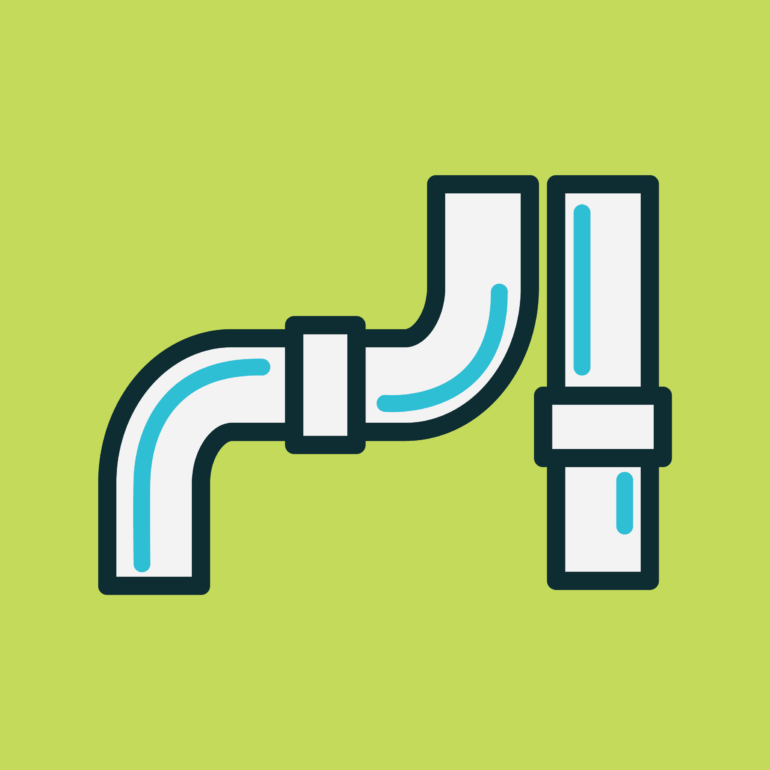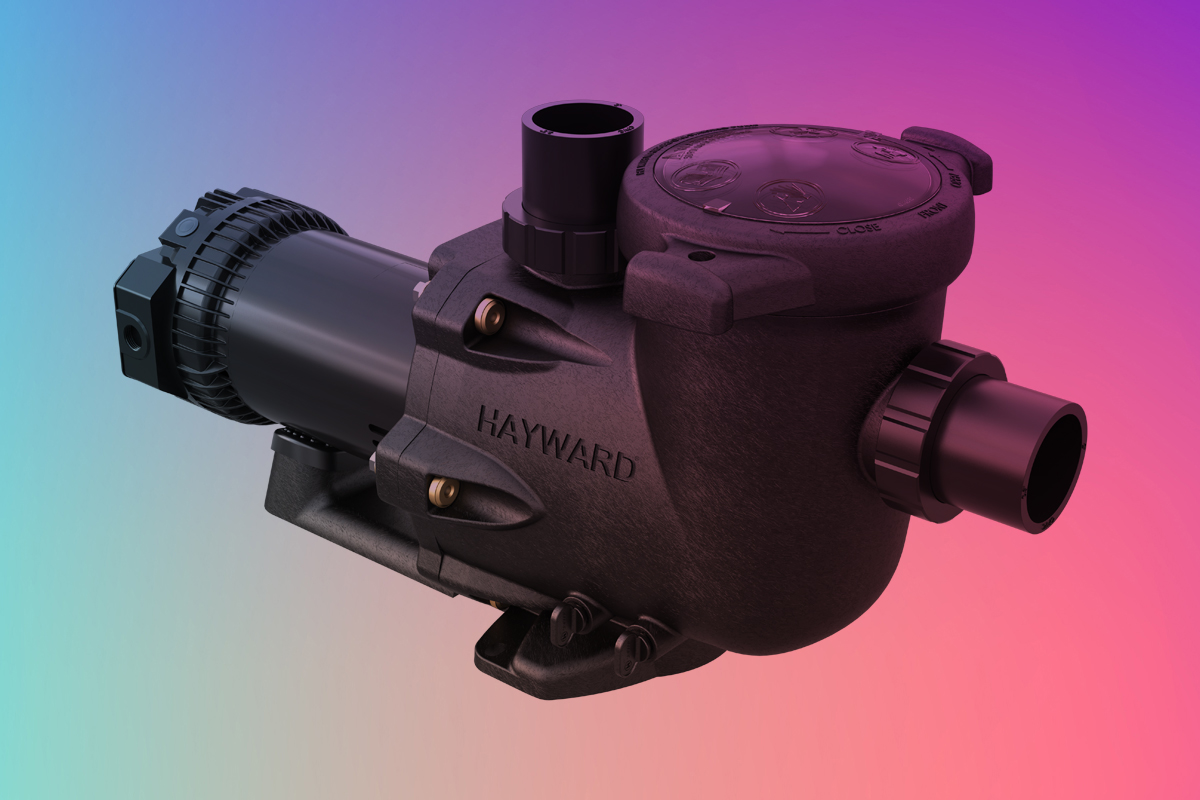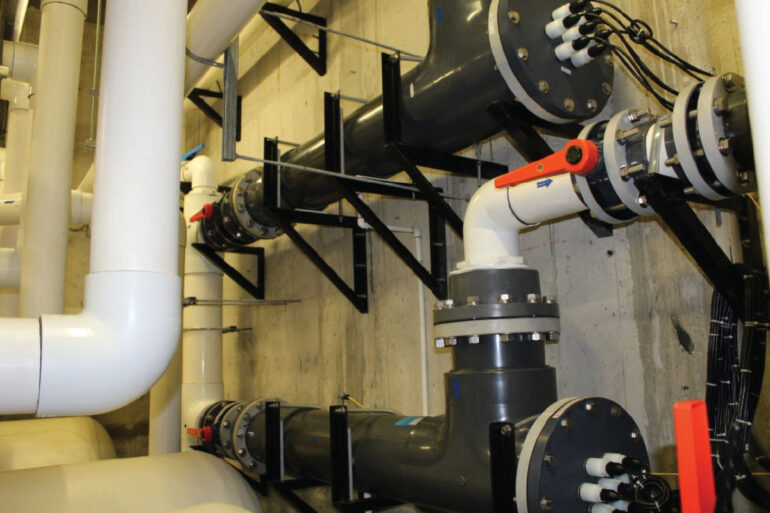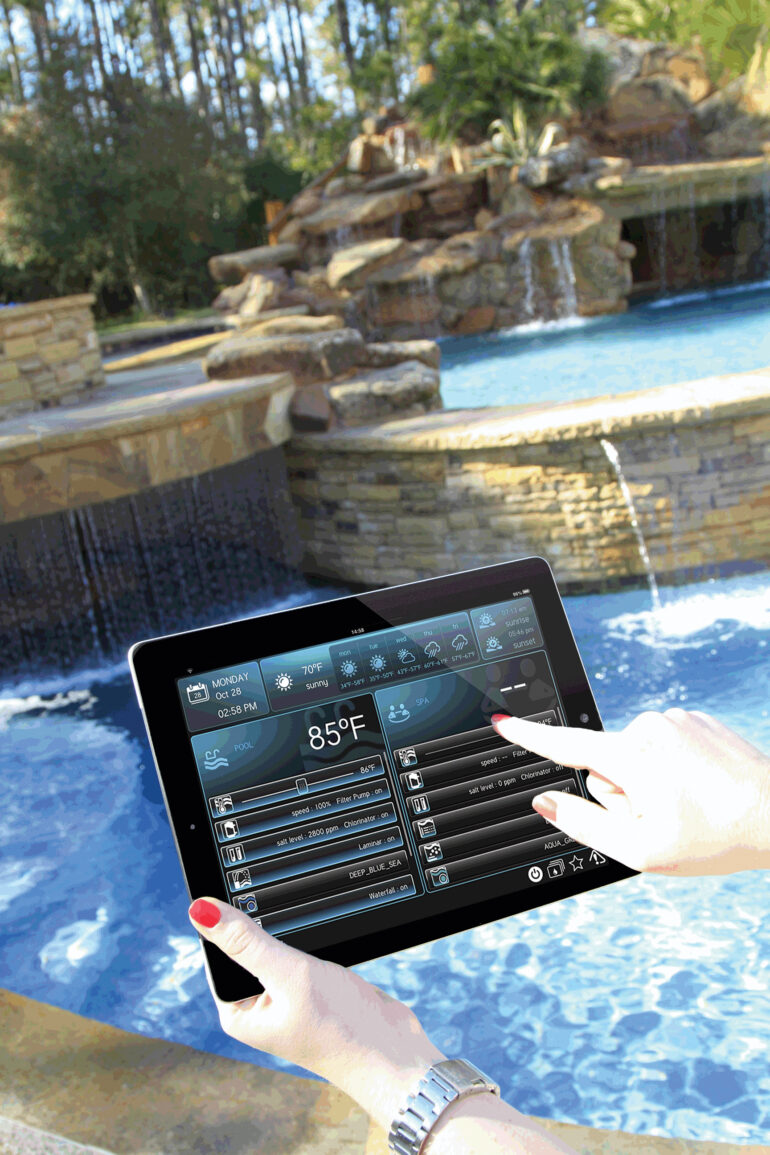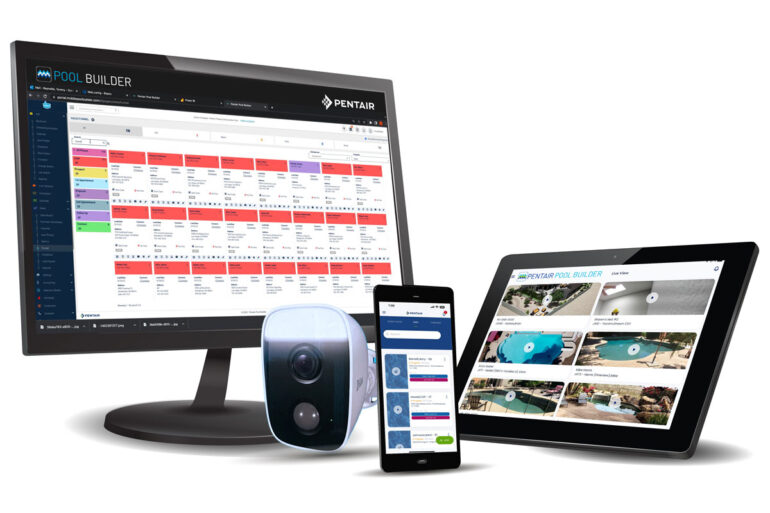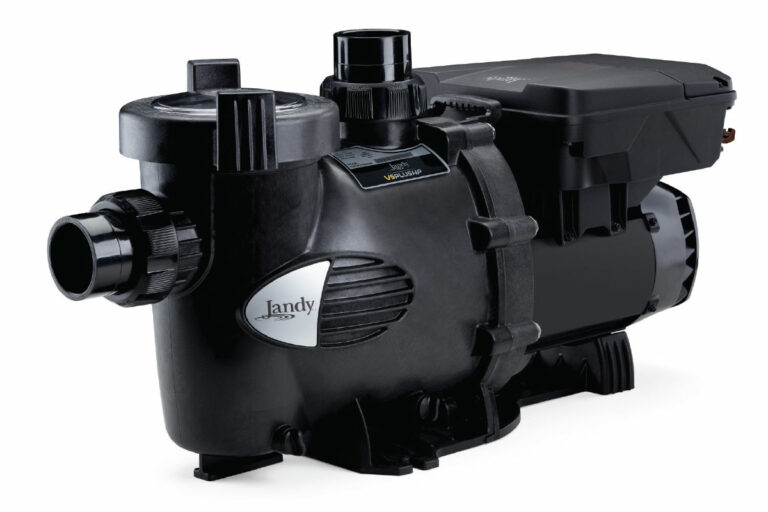Not Your Dad’s Technology
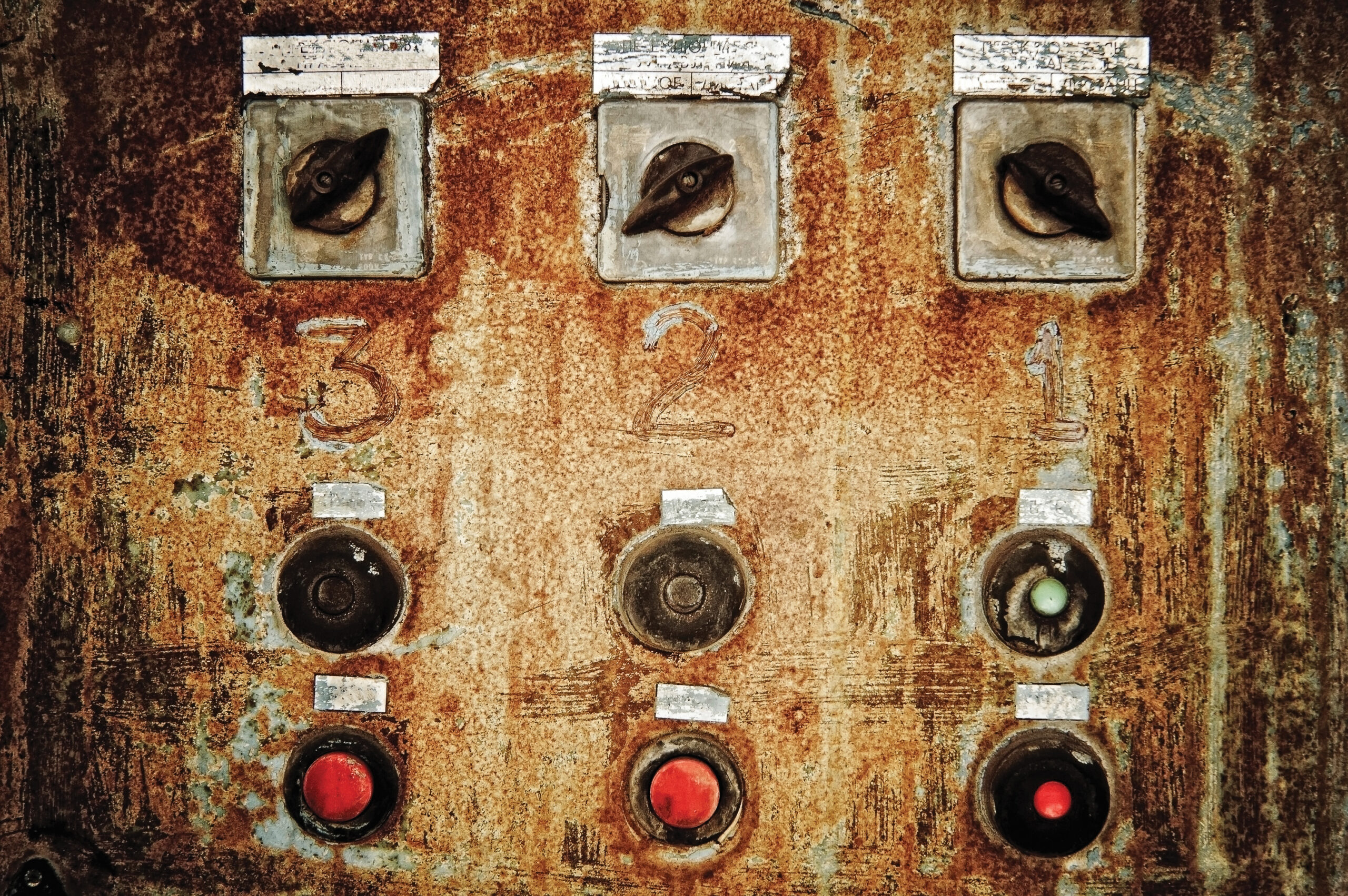
Gather ’round, kids, and let me tell you about the tough times when there were no whiz-bang apps to operate your pool with your smartphone. Heck, before smartphones we had dumb phones that only allowed you to make or receive calls; no texting, surfing the web or playing Candy Crush Saga. Facebook, Pinterest, LinkedIn — they weren’t even on the radar back then. Way before any touch-screen pool controllers came along, you had to physically wander into the shrubbery, turn valves by hand and risk getting cut open by rose thorns.
This could almost be the narrative for a TV sitcom: “How I Met Your Pool Controller.” (I didn’t say it would be a very good or very funny sitcom.) The point is — to quote an old cigarette advertising slogan — “we’ve come a long way, baby!”
For this article, an all-star panel was assembled to reminisce and track how far pool controllers have come over the last 20 years or more. Our panelists are David Nibbler, vice president of engineering for Zodiac Pool Systems; Allen Ustianowski, marketing manager of pool and spa products for Intermatic; David MacCallum, senior product manager with Pentair Aquatic Systems and Greg Fournier, product manager with Hayward Pool Products.
Today’s pool controllers allow users to orchestrate and choreograph a sensory overload of lights, water activity, music and more with the push of a few buttons on a touch screen. It’s amazing to compare this to the early 1990s (or earlier), when few of us could have imagined how far computer technology would push the pool industry into new directions — sometimes kicking and screaming.
With 14 years of experience at Intermatic, Ustianowski says the timeline for controllers (based on his company’s historical timeline) actually has roots back to the 1940s for the lighting industry: “It wasn’t until the late ’60s that the company discovered they had an opportunity to sell timers to the pool industry.”
By the 1980s, Allen says Intermatic began receiving requests for remote-control devices. The early remote devices used radio-frequency control, much like a garage door opener, or early television remotes to operate pumps and lighting. It all sounds (and looks) so archaic today, but for a time, this was the latest technology and consumers ate it up. It sure beat doing battle with thorny underbrush while getting to valve controls on the side of the house.
Zodiac’s David Nibbler started in the industry with Jandy Pool Products, one of the noted pioneers of industry controller systems. Nibbler points out that early technology was tantamount to mechanical time clocks, much like those clunky timers you’d put on lamps to make it look like someone was at home if you were away on business or vacation. Like those timers, a power failure meant your pool pumps and lights were going on and off at odd times until you got home and fixed it.
“To be fair, these were simpler pools at the time,” Nibbler says. “You would generally have one pump, always one pool light and a heater. As opposed to the mechanical time clocks, one of the things that first drove the popularity of control systems were pool/spa combinations within the in-ground pool business. Suddenly there was a need for more than just timing things to go on and off. You needed to switch water flow; valves had to move. For efficiency, we still wanted to use one pump, and generally one filter and heater. Controllers needed to adapt to the mechanics of controlling two different bodies of water (to switch between), and the temperature differences in each.”
So thanks to the pool/spa combo, the need was born to bring the controller box inside the house. This might seem trivial, but this began to facilitate changes in control systems based on consumer demands. Consumers no longer cared to go outside to a controller and remember which valves to turn in which direction, or what water temperature to set based on their desired spa or pool use — let alone the seemingly endless trips outside to see if conditions were finally right to dive in.
Pentair’s David MacCallum says this new era propelled the pool industry toward a synergy with new and emerging technology — which brings our controller timeline into the 1990s. “I call that next advancement the Internet generation,” MacCallum says. When he came to Pentair in 2003 from Intel Corporation — where he dealt with or PDAs (personal data assistants like Palm Pilots), MacCallum says consumers seemed to be screaming for application in this type of environment from the standpoint of consumer ease-of-use.
To MacCallum’s point that PDA technology should be adapted for use in controllers, industry standards in the late 1990s and early 2000s saw most pool controllers designed with a monochrome screen — not a touch screen — with a series of hard buttons to the left, right and usually bottom of the screen, which required the hard button be lined up to whatever the screen said.
MacCallum spearheaded a project at Pentair that would eventually be brought to market under the name Screen Logic: “It was a collection of touch screen and PC interfaces that allowed local control and remote control over the Internet of your pool and spa,” he recalls. “We launched that in 2006 with in-wall screens and 8.4 inch Wi-Fi tablets, which were like the precursor to the iPad, we also had PDA’s and Windows based PC interfaces.”
The technology push from computing giants like Apple and Windows allowed pool and controller manufacturers to ride a trend consumers had already become fascinated with. Apps soon began proliferating a new generation of controllers, which allowed smartphones and tablets to function as remote-control interfaces for pools and spas.
At Hayward Pool Products, Fournier has a unique vantage on evolving Internet technology; his background prior to joining the company was in consumer electronics. Today’s devices are really water feature–control devices, he says. “With the growth of technological products in the pool industry, the controller becomes a much more important component for the mid-to-high end back yard,” Fournier says. “You’re now controlling a host of different water features, landscape features. Everything in your backyard is now being managed by this controller.”
The sleepy backyard isn’t so sleepy anymore when you consider the array of features that can be manipulated with a box that, not so very long ago, was a glorified valve and mechanical timer switchbox.
Hayward’s market research came back with a cry from consumers for simplicity in Internet-based technology, Fournier says. “When we started looking at simplicity features for the end-user, we wanted the icons on the touch-screen to be completely understandable — and ditto for the text description below the icon,” he says. “For example, if a button that says ‘pool on’ is easier to understand than one that says ‘circulation pump,’ the user can change that text.”
Certainly a dramatic advancement in pool controllers is the legacy of current and emerging technologies. The technology from 20-plus years ago is easy to poke fun at; in years to come, the gadgets that make us oooh and ahhh will be fodder for a new generation. In that spirit, we asked our panel to don their futuristic hats: How will technology further change pool-control devices?
Zodiac’s Nibbler like most on our panel sees tomorrow’s controllers as aiding pool-service professionals with their service call prep: “If they have a customer saying the heater won’t heat or the pool is always dirty, they can log into the controller and look at the history of the pump schedule or look at the chlorine generator and make necessary changes by remote. It can certainly help them be better equipped for the specifics of a necessary in-person service call, too.”
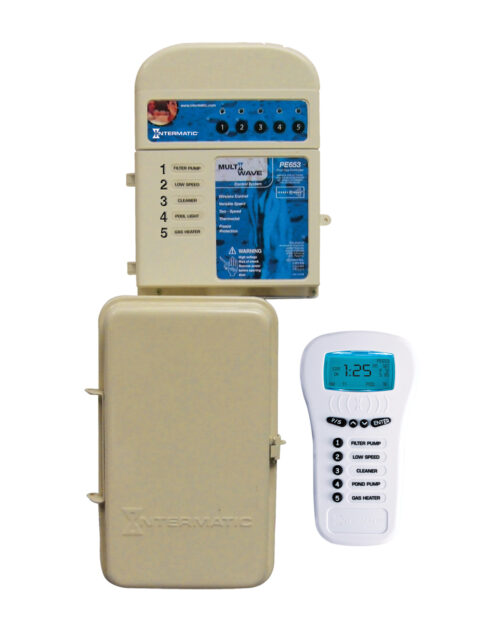
Intermatic controller 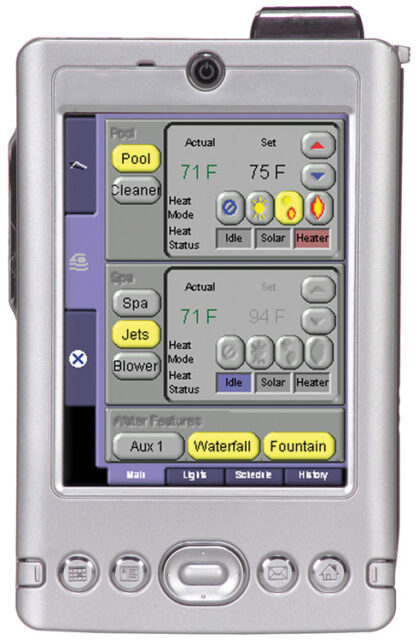
Pentair IntelliTouch 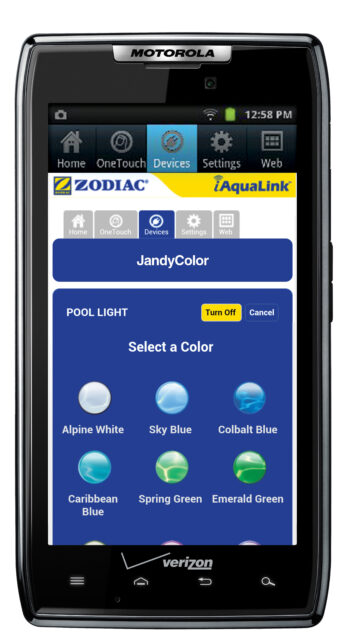
Zodiac iAquaLink
Ustianowski says he can see the control box possibly going away entirely: “In the future, maybe each piece of equipment — lights, pump and blower — will have its own transceivers linked into a mesh network, maybe a home automation system. Right now your home automation is not tied to your pool; I can see that change happening.”
Many decades ago, writer Aldous Huxley warned that machines would take over. The man might have a point — but if my pool controller of tomorrow allows me to experience my pool the way it was meant to be enjoyed, I’m happy to raise a toast in his honor.

